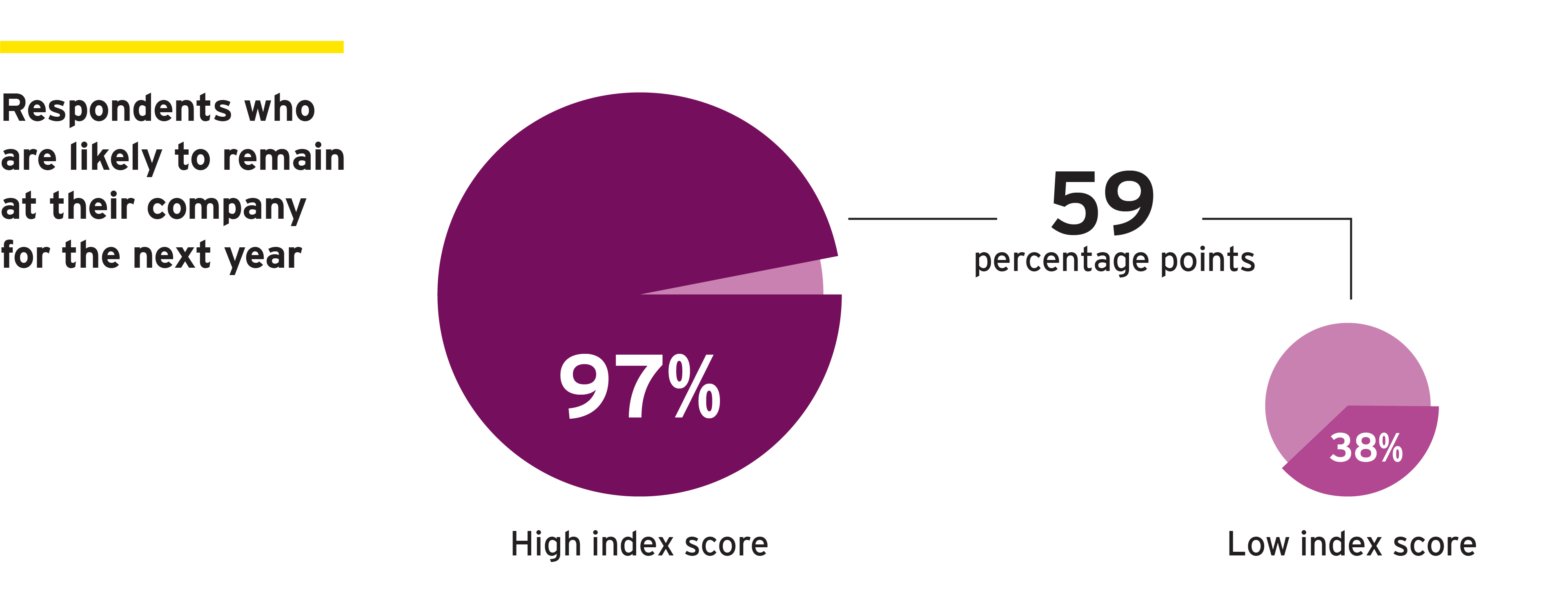EY refers to the global organization, and may refer to one or more, of the member firms of Ernst & Young Global Limited, each of which is a separate legal entity. Ernst & Young Global Limited, a UK company limited by guarantee, does not provide services to clients.

Download the 2024 EY US LGBTQ+ Workplace Barometer
The LGBTQ+ community in the US today comprises nearly 14 million adults and is growing rapidly. This growth is due in large part to the fact that Gen Z (i.e., people born between 1997 and 2012) are six times more likely than their Gen X counterparts to identify as LGBTQ+. With Gen Z set to become 30% of the workforce by the year 2030, employers should deepen their focus on LGBTQ+ inclusion, visibility and engagement through robust commitments, communications, programming and other action-oriented initiatives.
Companies that take this approach will be best positioned to not only enhance a sense of psychological safety and belonging among their current LGBTQ+ workforce, but also to attract top talent inclusive of this community. With all of this in mind, we recently deployed the EY US 2024 LGBTQ+ Workplace Barometer. This survey of 500 LGBTQ+ full-time workers in the US who hold corporate roles at mid- and large-size organizations with 2,500 or more employees reveals disconnects in employee engagement and opportunities for improvement.
There are millions of dollars on the line, and as the LGBTQ+ population grows, organizations that prioritize inclusiveness will differentiate themselves among top talent.
The cost of not prioritizing inclusion
Creating an inclusive workplace environment is important to attract, engage and retain LGBTQ+ employees. Ninety-seven percent of participants who rated their organization highly responded that they expect to remain with their employer for the next year. On the other end of the spectrum, however, just 38% of respondents who gave their employer a lower rating expect to stay with their employer over the next year. For the average Fortune 500 company, which employs about 62,000 people, improving retention of LGBTQ+ employees by just 5% could result in annual savings of nearly $4.2 million in turnover costs alone.1

Understanding generational shifts
Without addressing the needs of the growing Gen Z LGBTQ+ workforce, companies could miss the opportunity to attract a talent pool of up to 10 million workers over the next five years:
- Gen Z employees who identify as LGBTQ+ were also found to be three times as likely to be unsure about their organization’s LGBTQ+ initiatives.
- On average, the Gen Z LGBTQ+ employees we surveyed gave their employer’s LGBTQ+ inclusion efforts a C+, whereas respondents from other generations gave their employers a B average rating. This gap suggests Gen Z may have different expectations when evaluating employers’ inclusion efforts.
Navigating an uneven landscape
Employers should also consider an intersectional approach across all dimensions of diversity in designing programming to support and empower their LGBTQ+ workforce. To that end, our survey uncovered additional findings related to racially and ethnically diverse (R&ED) workers within the LGBTQ+ community. For example:
Through listening, learning, offering support and taking action, leaders will build trust and credibility, which in turn can help their organizations stand out with a powerful and growing segment of the population.


